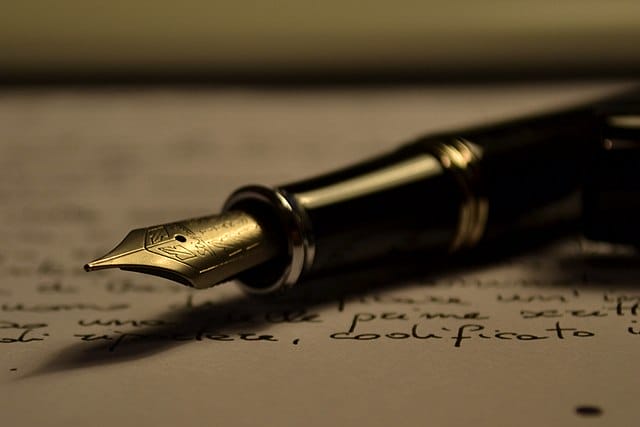I saw the writing on the wall, incidentally, in the writing of my undergraduate friends. Was this a possible welfare concern? No, but maybe it ought to be. What I was seeing was the slow, unceremonious death of handwriting. Last autumn The Telegraph reported that “Children’s handwriting is now so bad that teenagers need lessons in secondary school, experts have warned”. The Guardian again picked up the issue a week ago, publishing an essay which observed that “we are far more likely to use our hands to type or swipe than pick up a pen. But in the process we are in danger of losing cognitive skills, sensory experience – and a connection to history”.
For many, I suspect, the death of handwriting will be hardly felt, and most younger students will scarcely know what they are missing. Indeed, in the digital age, handwriting almost seems like an antiquated affectation. Such an impression is not helped when people learn that I can actually write with both hands and use a dip pen that might have witnessed the inauguration of President William Howard Taft.
Yet for history students at Oxford, reading and writing cursive handwriting remains a profoundly important skill that often goes understated by tutors. You can master the historiography, possess an encyclopaedic knowledge of the sources, come up with a clever, original historical argument, and write brilliant prose; but you nevertheless remain a hopeless historian if you cannot make head or tail of what your eminent historical subject has inscribed for you in the archives. As former Harvard president Drew Gilpin Faust observed a few years ago, it seems the newest generation of budding historians has recognised this. Lamentably they responded not by practising their handwriting but by pursuing research topics that only required reading published sources.
As a student reading for a DPhil in history, I have been privileged to be able to handle and read thousands of letters written by some of the most famous faces in British history. During the course of all that I have come to see handwriting not just as a necessary skill for the historian, but also as a dying form of personal expression that is like no other. In the archives, one quickly learns to distinguish the handwriting styles of different people: everyone’s writing is uniquely theirs. You won’t mistake the distinct hand of William Gladstone for the highly legible, schoolboy scribbles of King George V. On some level, I feel these literary fingerprints also convey the writer’s emotions more viscerally than any transcription.
Often replete with underlined words and a liberal use of exclamation marks, one can almost feel the fury behind a handwritten rebuke from Queen Victoria. Equally Clementine Churchill’s handwritten letters to her husband, which sometimes included adorable doodles of cats, always radiate a fuzzy warmth to me.
Perhaps at this point, you may think I am dallying with a bit of pseudoscientific nonsense. But what I know for sure is that on email and on the soulless Word ‘processor’, every letter and word is formed in perfect uniformity, intimating nothing at all of the writer. There are no interesting pen strokes nor ornamental flourishes, nor quirky curlicues made in the moment. The quotidian Word document looks like it could have been written today, yesterday, or tomorrow; by anyone and no one. That is why you won’t see anybody flogging an email written by some celebrity, whilst there are plenty of people who will pay hundreds of pounds for a superstar’s chicken scratch on a piece of paper.
For all these reasons and more I continue to keep a humble handwritten diary of my time in Oxford. Hopefully the future Oxon will be able to read my handwriting without first taking a palaeography class; but seeing the writing of some of my undergraduate friends, I’d rather hold my pen than hold my breath!
Have an opinion on the points raised in this article? Send us a 150-word letter at [email protected] and see your response in our next print or online.


